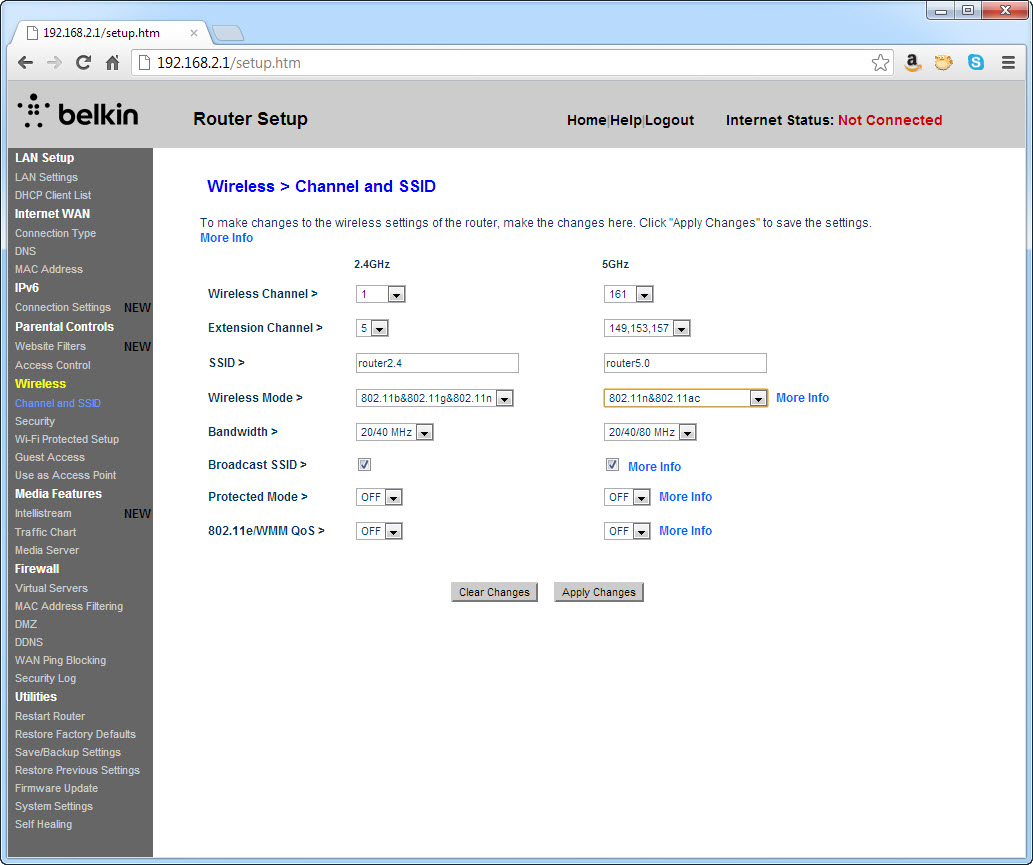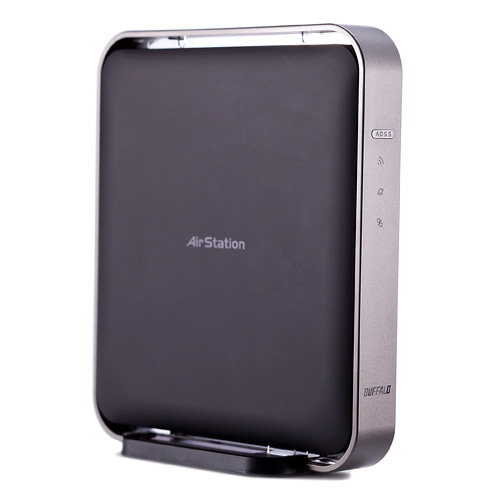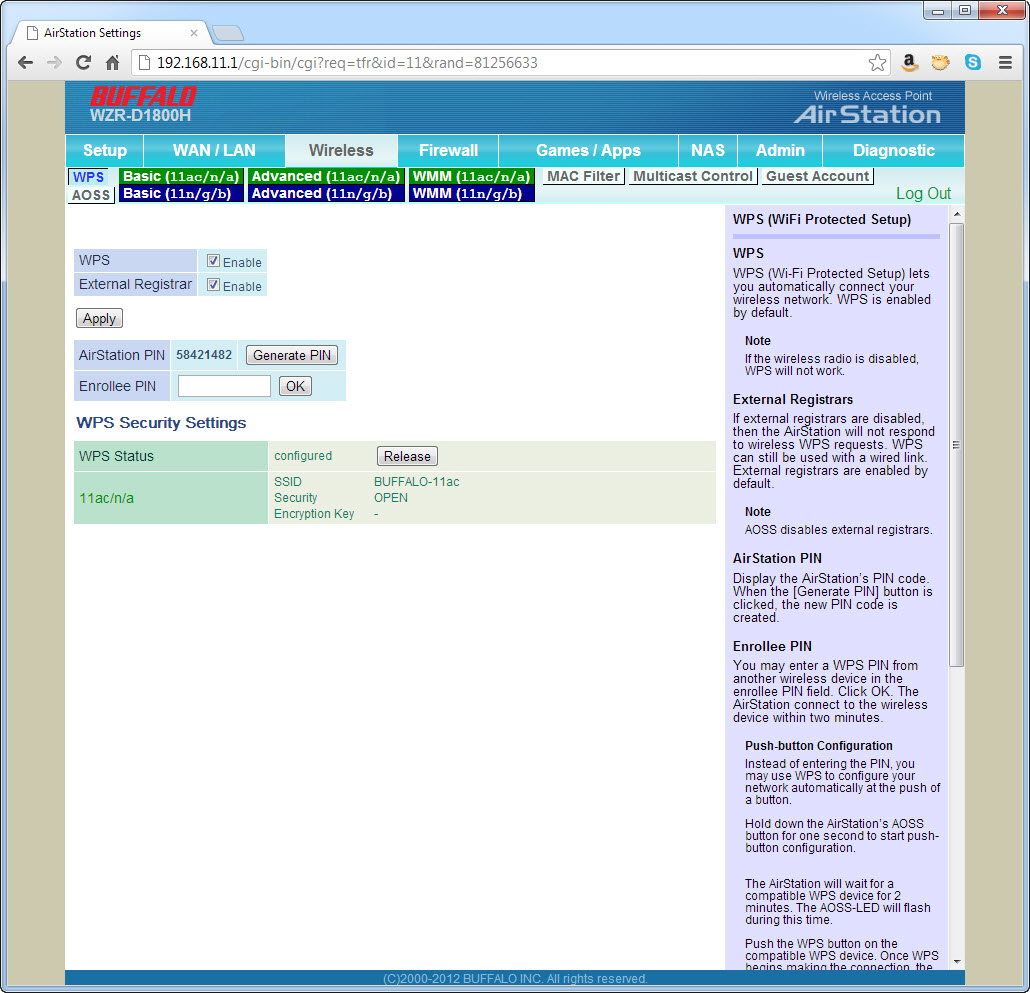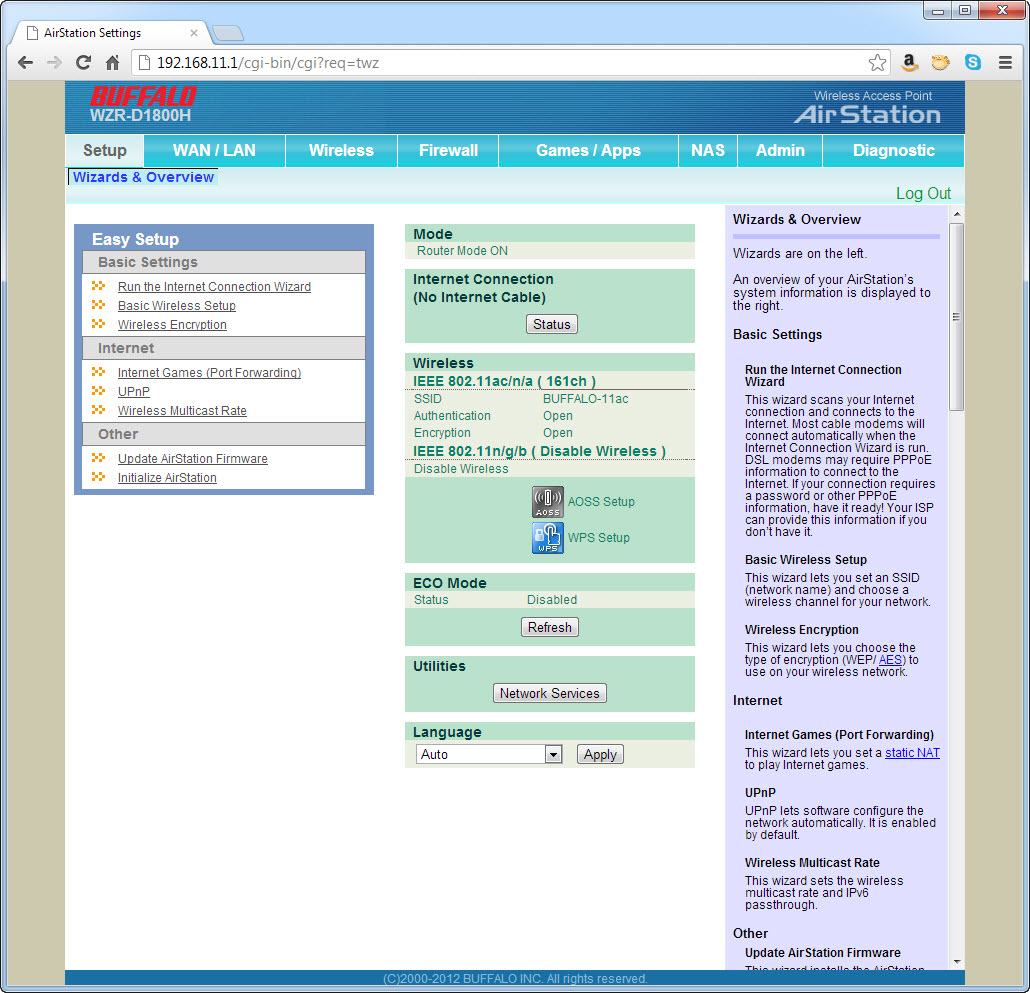Gigabit Wireless? Five 802.11ac Routers, Benchmarked
Five years ago, we didn't have homes with a dozen wireless nodes and the need to run HD video to multiple screens. Today we do. Our 802.11n networks, especially on the 2.4 GHz band, are swamped. Can 802.11ac save the day? We test six routers to find out.
Belkin AC1200 DB And Buffalo AC1300/N900
Why you can trust Tom's Hardware
Belkin AC1200 DB
Bad news first. We spent about an hour on the phone with Belkin’s tech support and ended up getting a replacement unit when the first unit wouldn’t connect to our client in the long-range tests. The second unit had the same problem, which is why we won’t bother with the usual "well, maybe this particular unit was a lemon" spiel. No, the problem was that Belkin tried to undercut its 802.11ac competition ($150 at Amazon) with a 2x2 antenna design and did a terrible job of implementing it. This has "marketing decisions trumped engineering" written all over it. We don’t like bashing hardware, and we don’t have to in this case. The results depicted in our charts will speak for themselves.
In case you were curious as to why Belkin’s advertising talks about the benefits of 802.11ac rather than its own model’s specific results ("up to 2.8x faster physical data rate when compared to 802.11n Wi-Fi routers using two antennas to transmit and receive data"), now you know.
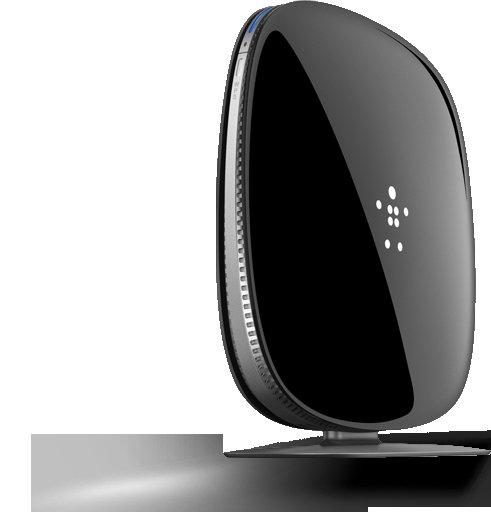
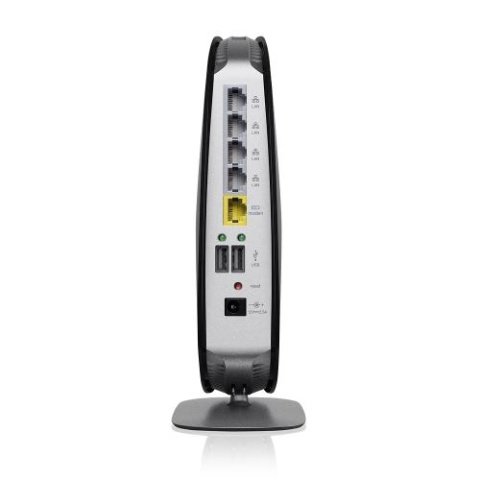
We won’t belabor the pointless. Yes, the AC1200 has four gigabit ports, some basic QoS features, parental controls, WPS push-button support, and so on. Yes, it can handle traffic on both bands simultaneously. The menu screens are nothing special. But why discuss this further? Our support rep mentioned that the company is working on a 3x3 update to this product. Wait for that if you’re interested. This 2x2 AC1200 functions at close range, but any decent 802.11n router will blow it out of the water for far less money. Weak sauce, Belkin, weak sauce.
Buffalo AC1300/N900
On the other hand, Buffalo’s AirStation AC1300/N900 (WZR-D1800H; $160 at Newegg) holds a few pleasant surprises. While a bit on the boxy side, the relatively low price is very attractive for a model that delivers a fair amount of performance. Setup is straightforward, we like the inclusion of guest SSID access, it can serve as an access point, and it’s DLNA-certified for easy media streaming.
For us, Buffalo’s chief weakness is its menus, which are occasionally confusing, always unattractive, and comparatively slow to refresh. We do like the explanatory text that Buffalo builds into the right side of its interface, but overall, the firmware (v1.89) is in need of a major makeover (Ed.: As of publication, the newest firmware version is 1.91, though all vendors had to compete using versions submitted by a cut-off date). If you have your doubts, check out how Asus and Linksys do things, then ask yourself which approach you'd rather take. Still, Buffalo does use a 3x3:3 antenna design.
Current page: Belkin AC1200 DB And Buffalo AC1300/N900
Prev Page AirLive N450R And Asus RT-AC66U Next Page Linksys EA6500/AC1750 And Netgear R6300Get Tom's Hardware's best news and in-depth reviews, straight to your inbox.
-
boulbox Well, i can't wait until i can make my router give wifi all the way to my to my work area.(only a few blocks away)Reply -
I've tested both the R6300 and the RT-AC66U in my home. The R6300 beats it hands down. The average homes won't have the traffic that your artificial software creates. Even your tests show that R6300 in 5ghz mode is faster. People will buy these for gaming and HD movie viewing and the R6300 has better range as well. I've paired my R6300 with an ASUS PCE-AC66 desktop wireless AC adapter and I can acheive 30 MB/S (megabytes) to my HTPC in a 2 story house. That's an insane speed. The RT-AC66U only managed about 15 to 18 MB/s. Also make sure the R6300 has the latest firmware, which is V1.0.2.38_1.0.33. But in conclusion, the R6300 and the RT-AC66U are like a SRT Viper and ZR1 Vette. They are both great pieces of hardware to fit most users needs. Get the ASUS If you got a ton of traffic and a lot of 2.4 ghz devices. Grab the R6300 if you are looking for a friendly setup, max speed, and max range.Reply
-
fwupow Man it sure sucks when you type a long comment and it gets vaporized cuz you weren't logged in.Reply -
DeusAres I'd be happy with a 2Mb/s connection. It'd be better than this horrible 512 Kb/s connection I have now. At least then, I may actually be able to watch youtube vids in 360p.Reply -
fwupow Here's the gist of what I typed before it was rudely vaporized.Reply
I have a dual-band router (Netgear N600). I also purchased a couple of dual-band client USB adapters Linksys AE2500 or something to that effect.
So the USB adapter works fine for a desktop, but having that crap sticking out the side of a laptop, netbook or tablet? Busted in 10 minutes. I hooked one up to my netbook and fried it within a couple of weeks because I'm a Netbook in bed guy. You wouldn't think it could get so hot from a USB port but it does.
So the reality is that you have all these devices that can't be upgraded to dual-band and enjoy very little if any benefit from the new-fangled dual-band router.
The other beef I have with routers is that they're terrible with the way they split up bandwidth between multiple devices. Instead of responsively reassigning bandwidth to the device that needs it, the router continues to reserve a major slice for a device that I'm not using.
If you live in an apartment building, it's actually rather rude to use the full 300Mbps capacity of the wireless N band, since you may well succeed in effectively shutting your neighbor down. There's so much happening in the 2.4GHz band nowadays, it's unreal. Your own cordless keyboards/mice/controllers etc can malfunction from being unable to get a packet in edgewise.
For these dual-band routers to be really useful, we need manufacturers of smartphones, tablets, laptops, netbook and such to build dual-band clients into them because adding the functionality with some sort of dongle just doesn't work. -
memadmax I was a 802.11g and n "adoption" tester....Reply
Never again...
I'll give ac a year or two before I jump on it... -
SteelCity1981 my wireless N produces 300 Megabits which would equal around 37 Megabytes. My highspeed internet doesn't come cloe to reaching 37 megabytes and i don't transfer tons of files wirelesly and my wi-fi rangs is pretty good .So i'm perfectly fine with my 300MB N wireless router right now. Besides that none of my devices spport ac anyhow so it would get bottlenecked from reaching its full potential.Reply -
chuckchurch iknowhowtofixit"Folks, the time to start your 802.11ac adoption is now."I think this review proved that it is time to wait for 2nd generation wireless AC routers to appear before rushing to purchase.Reply
Exactly. The 'client' adapter they used if anyone didn't catch it was a Cisco/Linksys router-sized device. Not practical by any means. It'd be totally insane to make any product recommendations prior to real client adapters being available, or more accurately, embedded ones are available. I think a wireless salesman wrote this article.
